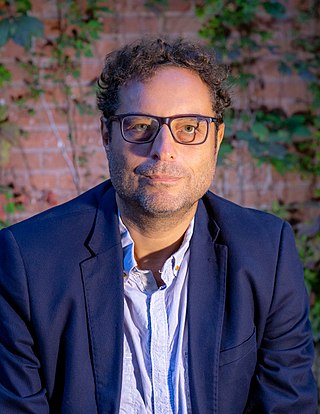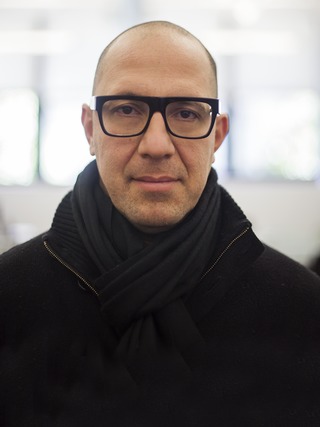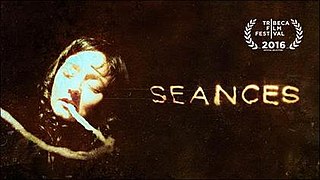Related Research Articles

The National Film Board of Canada is a Canadian public film and digital media producer and distributor. An agency of the Government of Canada, the NFB produces and distributes documentary films, animation, web documentaries, and alternative dramas. In total, the NFB has produced over 13,000 productions since its inception, which have won over 5,000 awards. The NFB reports to the Parliament of Canada through the Minister of Canadian Heritage. It has bilingual production programs and branches in English and French, including multicultural-related documentaries.
Fort McMoney is a 2013 web documentary and strategy video game about Fort McMurray, Alberta, Canada and Athabasca oil sands development, directed by David Dufresne. The documentary uses interactive game elements to allow users to decide the city's future and attempt to responsibly develop the world's largest oil sands reserves.

Tomer Sisley is an Israeli and French actor and comedian.

Brett Gaylor is a Canadian documentary filmmaker living in Victoria, British Columbia. He grew up on Galiano Island, British Columbia. He was formerly the VP of Mozilla's Webmaker Program. His documentary, Do Not Track, explores privacy and the web economy.

Theodore Asenov Ushev is a Bulgarian animator, film director and screenwriter based in Montreal. He is best known for his work at the National Film Board of Canada, including the 2016 animated short Blind Vaysha, which was nominated for an Academy Award. He is a Chevalier of the Ordre des Arts et des Lettres of France.
My Tribe Is My Life is an interactive web documentary produced in Montreal by the National Film Board of Canada (NFB), which explores how young people use the internet to forge identities and relationships within various music subcultures. Directed by Myriam Verreault, the project follows eight people from across the province of Quebec who have found virtual communities through the Web.
BLA BLA is an interactive animated film for computer created by Vincent Morisset with Montreal studio AATOAA, and produced by the National Film Board of Canada. The online work has been described as exploring "the principles of human communication," and follows Morisset's collaborations with Arcade Fire on Neon Bible, considered the first interactive music video.
Bear 71 is a 20-minute 2012 interactive National Film Board of Canada (NFB) web documentary by Leanne Allison and Jeremy Mendes about a female grizzly bear in Banff National Park named Bear 71, who had a tracking collar implanted at the age of three and was watched via trail cameras in the park from 2001 to 2009. The documentary follows the bear, exploring the connections between the human and animal world, and the far-ranging effects that human settlements, roads and railways have on wildlife.

Navid Khonsari is an Iranian-Canadian video game, virtual/mixed reality, film and graphic novel creator, writer, director and producer.
Hugues Sweeney is head of French-language interactive media production at the National Film Board of Canada, based in Montreal. Sweeney's recent credits include My Tribe Is My Life, the online interactive animation work called Bla Bla, Rouge au carré, an interactive work about the 2012 Quebec student protests, and the 2013 production A Journal of Insomnia, a web documentary about insomnia which was originally conceived by Sweeney in the summer of 2009, when he and his wife were up nights due to the irregular sleep patterns of their newborn daughter.

Sleepless Night is a 2011 French-language action thriller film directed by Frédéric Jardin, who co-wrote the story with Nicolas Saada. The film stars Tomer Sisley, Adel Bencherif, Julien Boisselier, Serge Riaboukine and Pom Klementieff.

Seances is a 2016 interactive project by filmmaker and installation artist Guy Maddin, with co-creators Evan Johnson and Galen Johnson, and the National Film Board of Canada, combining Maddin's recreations of lost films with an algorithmic film generator that allows for multiple storytelling permutations. Maddin began the project in 2012 in Paris, France, shooting footage for 18 films at the Centre Georges Pompidou and continued shooting footage for an additional 12 films at the Phi Centre in Montreal, Quebec, Canada. The Paris and Montreal shoots each took three weeks, with Maddin completing one short film of approximately 15–20 minutes each day. The shoots were also presented as art installation projects, during which Maddin, along with the cast and crew, held a “séance” during which Maddin "invite[d] the spirit of a lost photoplay to possess them."

Kim Nguyen is a Canadian film director and screenwriter, best known for his 2012 film War Witch (Rebelle) which received numerous honours including an Academy Awards nomination for Best Foreign Language Film.

Highrise is a multi-year, multimedia documentary project about life in residential highrises, directed by Katerina Cizek and produced by Gerry Flahive for the National Film Board of Canada (NFB). The project, which began in 2009, includes five web documentaries—The Thousandth Tower, Out My Window, One Millionth Tower, A Short History of the Highrise and Universe Within: Digital Lives in the Global Highrise—as well as more than 20 derivative projects such as public art exhibits and live performances.
Circa 1948 is both a 2014 interactive app for iOS devices and an interactive installation created by Stan Douglas and the National Film Board of Canada's Digital Studio in Vancouver, led by Loc Dao. The project allows users to virtually explore such former districts and landmarks in Vancouver as Hogan's Alley and the original Hotel Vancouver, in the year 1948.
Do Not Track is a 2015 online interactive documentary series about internet privacy, conceived and directed by Brett Gaylor. The series, which combines short videos and interactive elements, seeks to educate people about who may be tracking them online and the amount of private information that may be extrapolated from their Internet activities. It interviews experts and activists such as danah boyd, Ethan Zuckerman, Kate Crawford, Cory Doctorow and Alicia Garza about how personal online data is being collected and used, and allows users see in real-time how their own personal data is being tracked.
The Unknown Photographer is a 2015 Quebec virtual reality work based around found photographs of World War I, co-produced by the digital production agency Turbulent and the National Film Board of Canada's French-language Digital Studio, both located in Montreal. The lead artists on the project were Loïc Suty, Osman Zeki and Claudine Matte. The work was produced by Claire Buffet and Louis-Richard Tremblay, with executive producers Marc Beaudet, Benoit Beauséjour and Hugues Sweeney.
Kel O’Neill is an American film director, artist, and actor. He is one half of the filmmaking duo Jongsma + O’Neill alongside Eline Jongsma.
Eline Jongsma is a Dutch film director and artist. She is one half of the filmmaking duo Jongsma + O’Neill alongside Kel O'Neill.
Way to Go is a 2015 Canada/France interactive film and virtual reality web-based experience created by the Montreal digital studio AATOAA and produced by National Film Board of Canada and France Télévisions. The production lets users take a virtual walk in the woods, through a combination of animation and immersive video.
References
- 1 2 3 Anderson, John (15 April 2013). "As You Watch, Invasion of the Platforms". The New York Times . Retrieved 15 April 2013.
- 1 2 3 Grant, Drew (9 April 2013). "Tribeca Goes Tech: Crowd-Sourced Insomnia and Robot Seals in Film Festival's New Transmedia Section". The New York Observer . Retrieved 15 April 2013.
- 1 2 Parent, Marie-Joëlle (15 April 2013). "Insomnie dans la ville qui ne dort jamais". Canoe.ca (in French). Montreal: Agence QMI. Archived from the original on June 28, 2013. Retrieved 15 April 2013.
{{cite news}}: CS1 maint: unfit URL (link) - ↑ "SonderCare Hospital Beds & Mattresses Help to Promote Good Sleep Habits". 2019-01-15. Retrieved 2024-12-12.
- 1 2 Adams, James (15 April 2013). "Wide awake? Here's a film that offers a virtual drop-in centre for the sleep-deprived". The Globe and Mail . Retrieved 16 April 2013.
- ↑ Deglise, Fabien (11 April 2013). "L'insomnie par procuration". Le Devoir (in French). Montreal. Retrieved 15 April 2013.